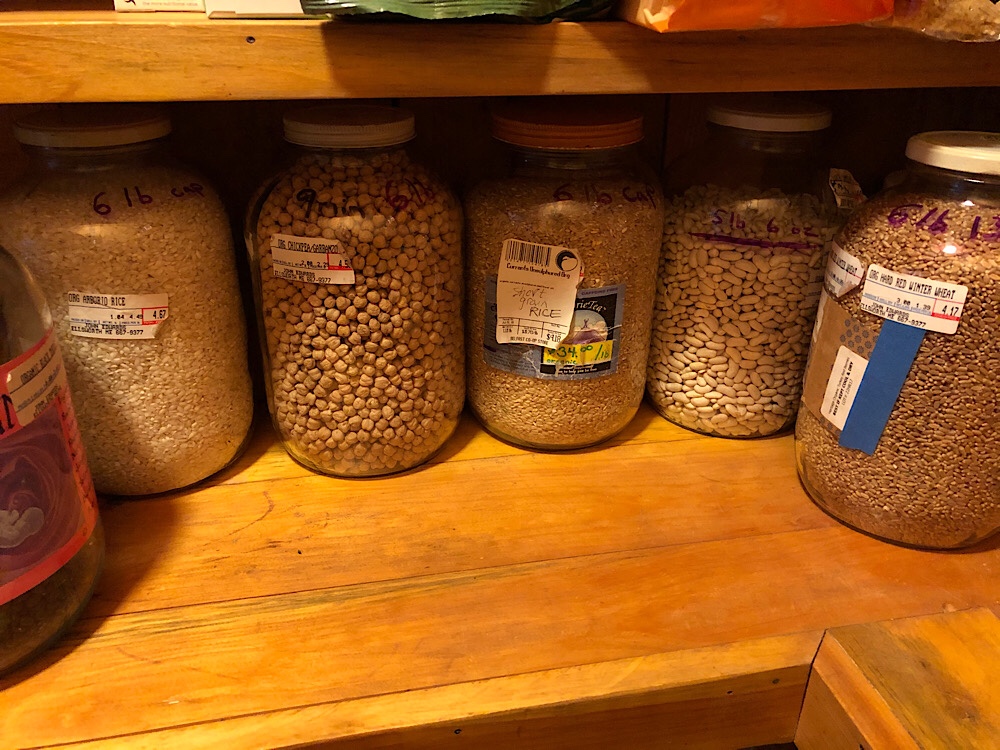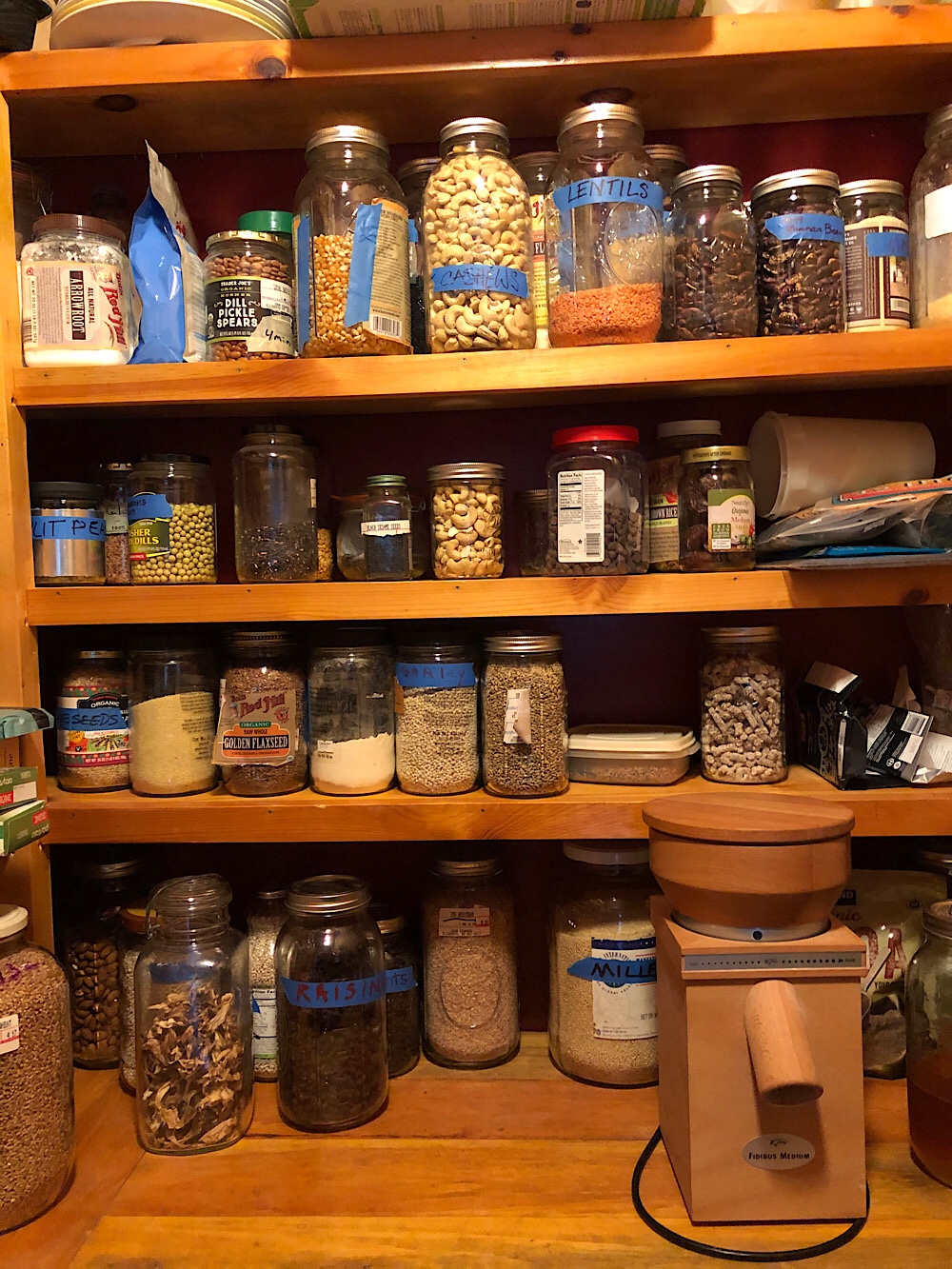The big bean seeds are fun to plant. Four inches apart in two rows.
Two varieties this year.
- Windsor (Fedco) – 38 seeds
- Vroma (Johnny’s) – 53 seeds
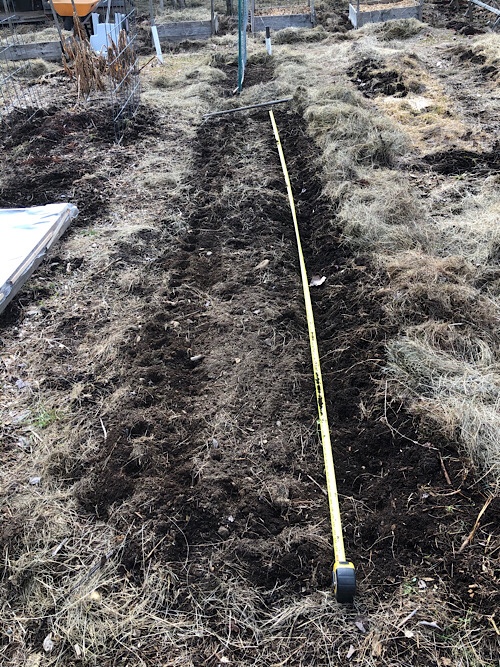

our maine home – zone 5b
The big bean seeds are fun to plant. Four inches apart in two rows.
Two varieties this year.


The green spears of chives show up, a welcome sight in the front flower garden by the bird feeder.
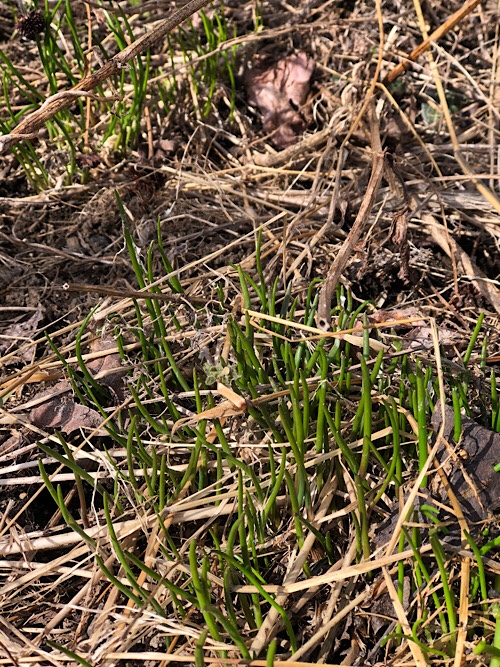
A big day in gardening at our house. It’s always exciting when we get the peas in the ground. This year they have their own private trellis instead of climbing up the outside of the chicken run. The chickens were not kind to the pea vines last year. We’re planting very early for Maine, but it’s been such a mild winter and the soil was in good shape for planting.
We planted Red Kitten spinach down one side and Winter Lettuce down the other to fill in the bed as the peas climb.
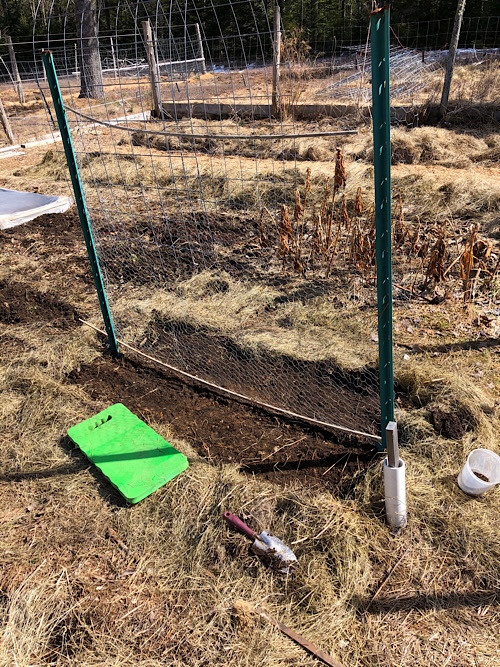
There is also continuing activity in making up soil blocks and caring for seedlings. Tomatoes, tomatillo, ground cherry, broccoli, leeks, shallots, Cippollini onions, cabbage, cauliflower, celery. Started three types of pepper today: King of the North, Jimmy Nardello, and Red Rocket (hot – more on that below).
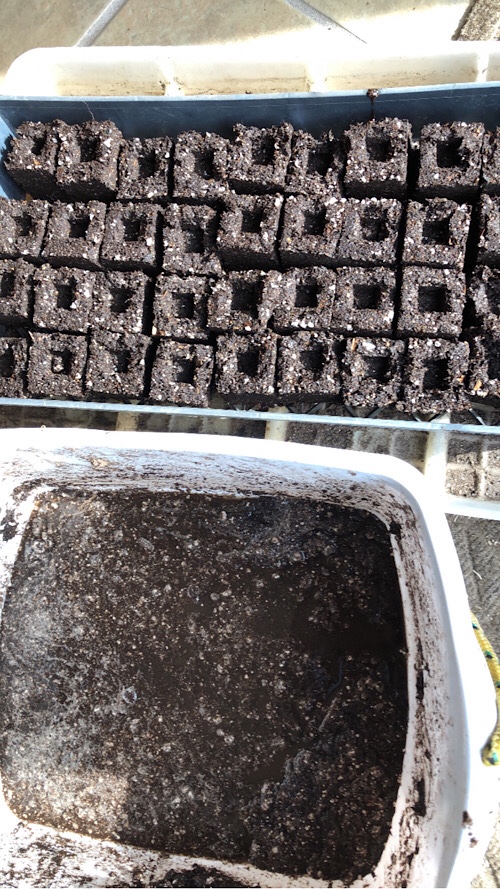
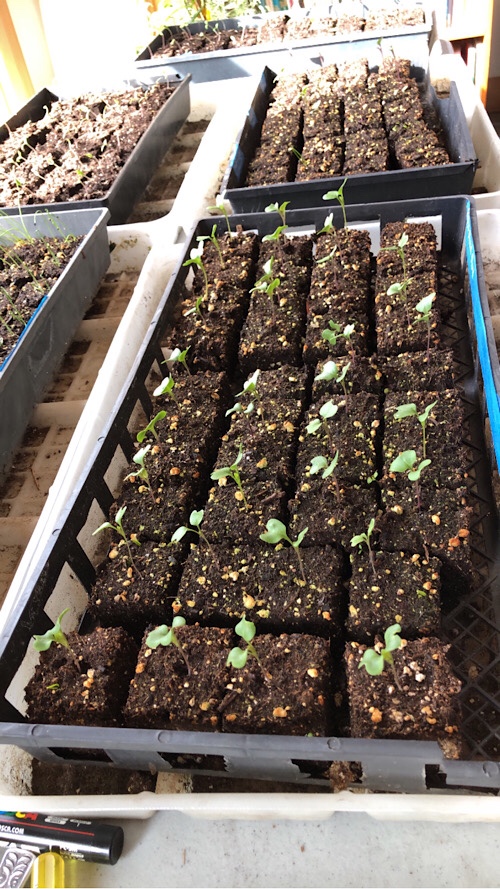
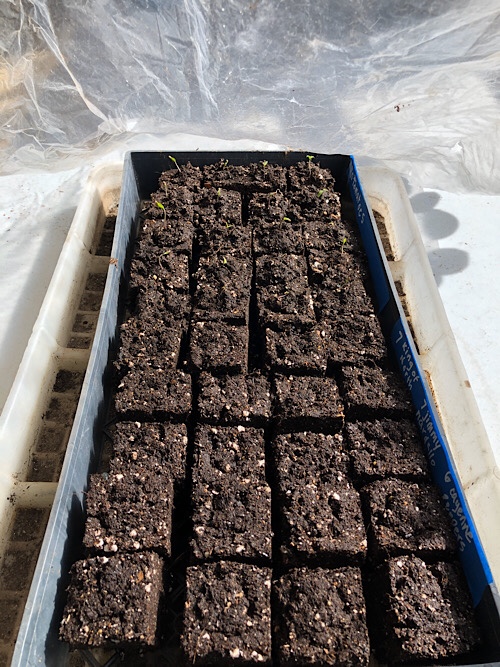
On the other side of the gardening lifecycle, I decided to process the dried Red Rocket peppers that have been hanging in the kitchen since last fall. First goal was to get some seeds to plant, then I decided to carry on and use the spice grinder to make some home ground cayenne pepper. This enterprise had us coughing most of the afternoon as cayenne particles dispersed everywhere. Sort of like the coronavirus.

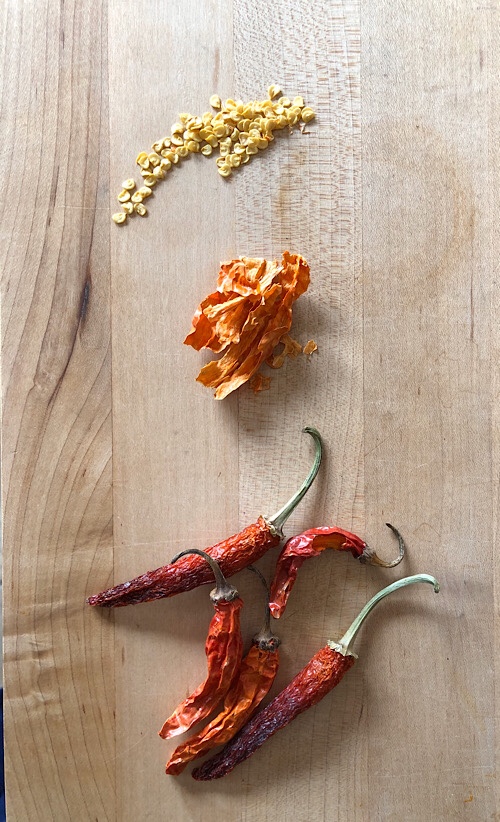
We are in the early phase of the Coronavirus SARS-2 pandemic. I’ve noticed that planning is very helpful in addressing anxiety. Garden planning is a chore I don’t enjoy, but it seems to help, so I’ll do some.
Here’s a look back at the past three years of gardening here:

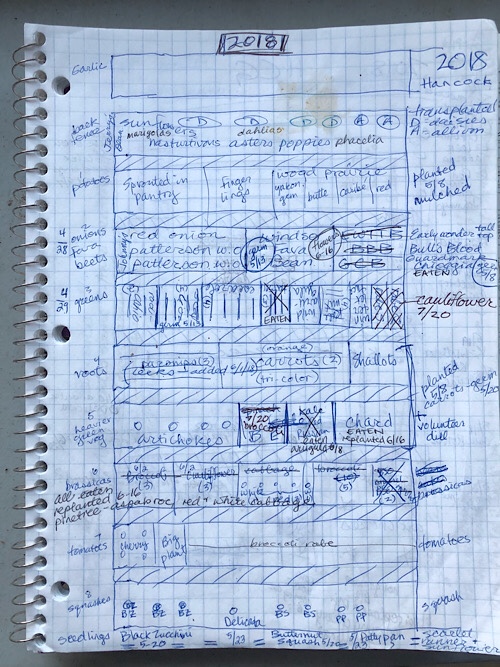
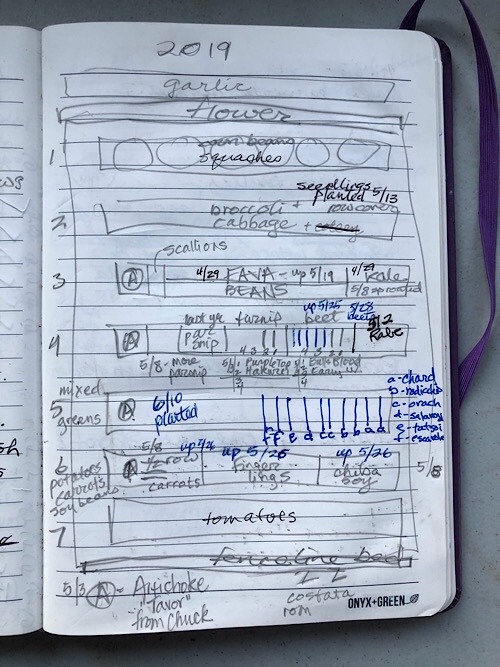
I like the row concept from last year. It makes rotation decisions easier and keeps me focused on what we like to eat. I think I will reuse the 2019 approach, but keep the actual planting results on a separate page.
There are actually 10 rows, so here’s a rough beginning for 2020:
We also have other areas to garden:
And ! I want to add some hugelkultur beds for wildflowers this year!
I feel like we’re moving into survivalist mode, but it’s also probably just the right time of year to do this. I went through most of last year’s crops that are in storage and evaluated how much we have. As usual, some crops were a big success and others not so much. Note: This is not very scientific!
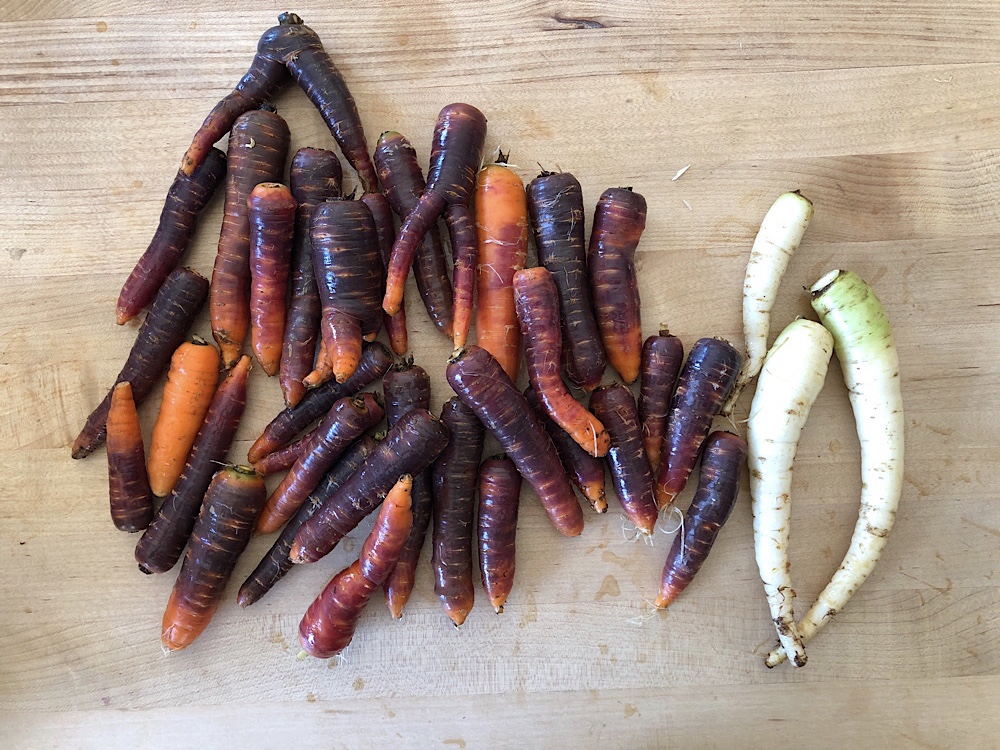
Carrots.
Stored in refrigerator. Mostly Purple Haze, a variety I really like. Trimmed off their tops and washed off some slime. They are still good eating. About 2-1/2 pounds. There are more in the garden to be dug!
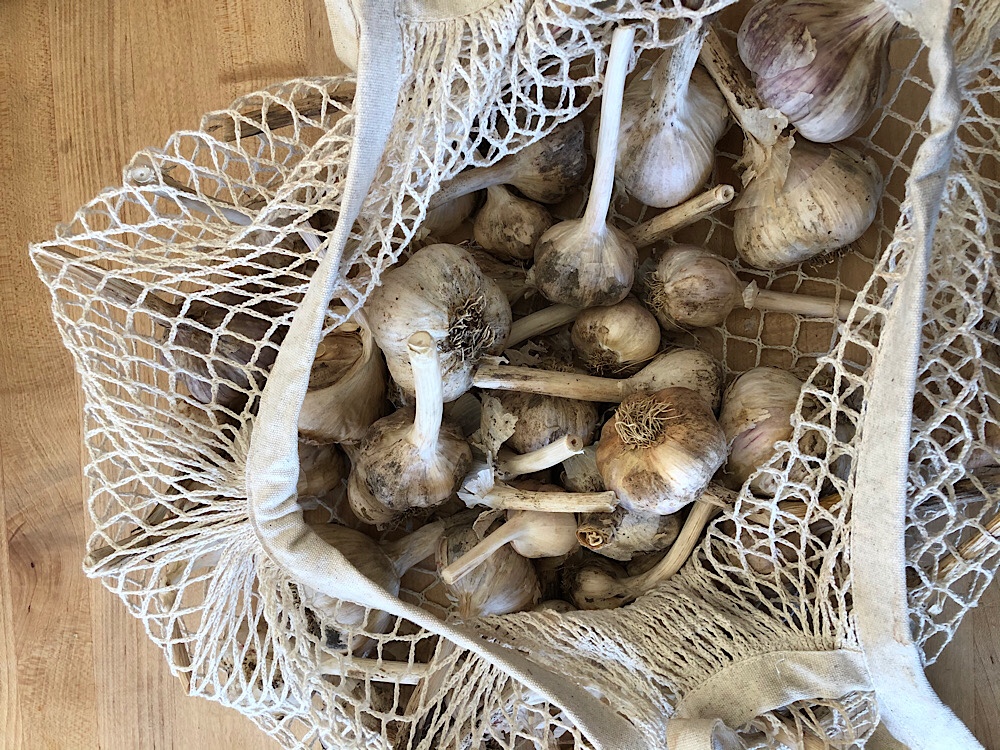
Garlic.
Hung in a net bag in the pantry. 3-1/2 pounds left. Not sprouting yet, but I expect they will soon.
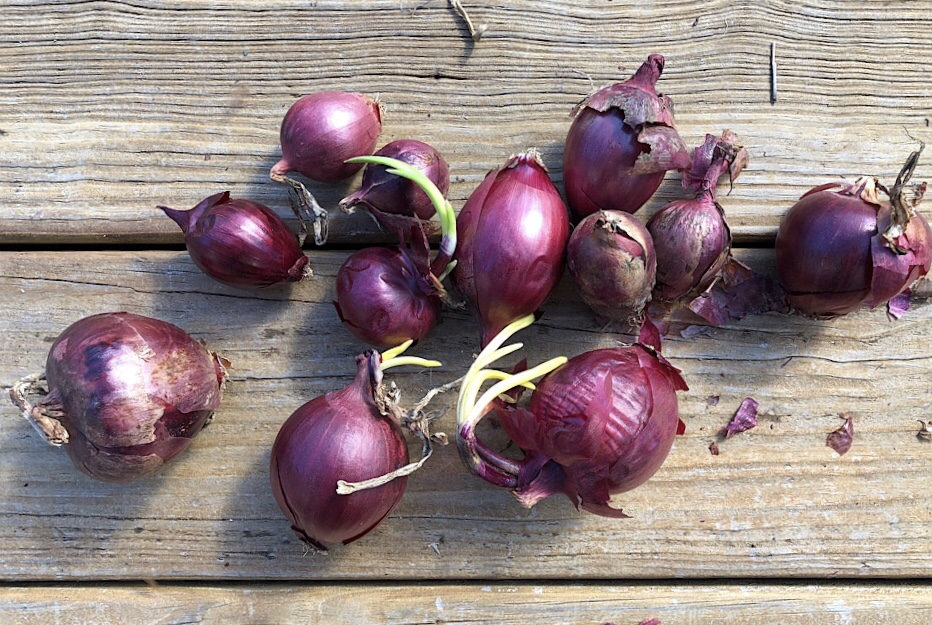
Onion, red.
A great crop, but coming to an end. Sprouting as you can see. Only about 1-1/2 pounds left.
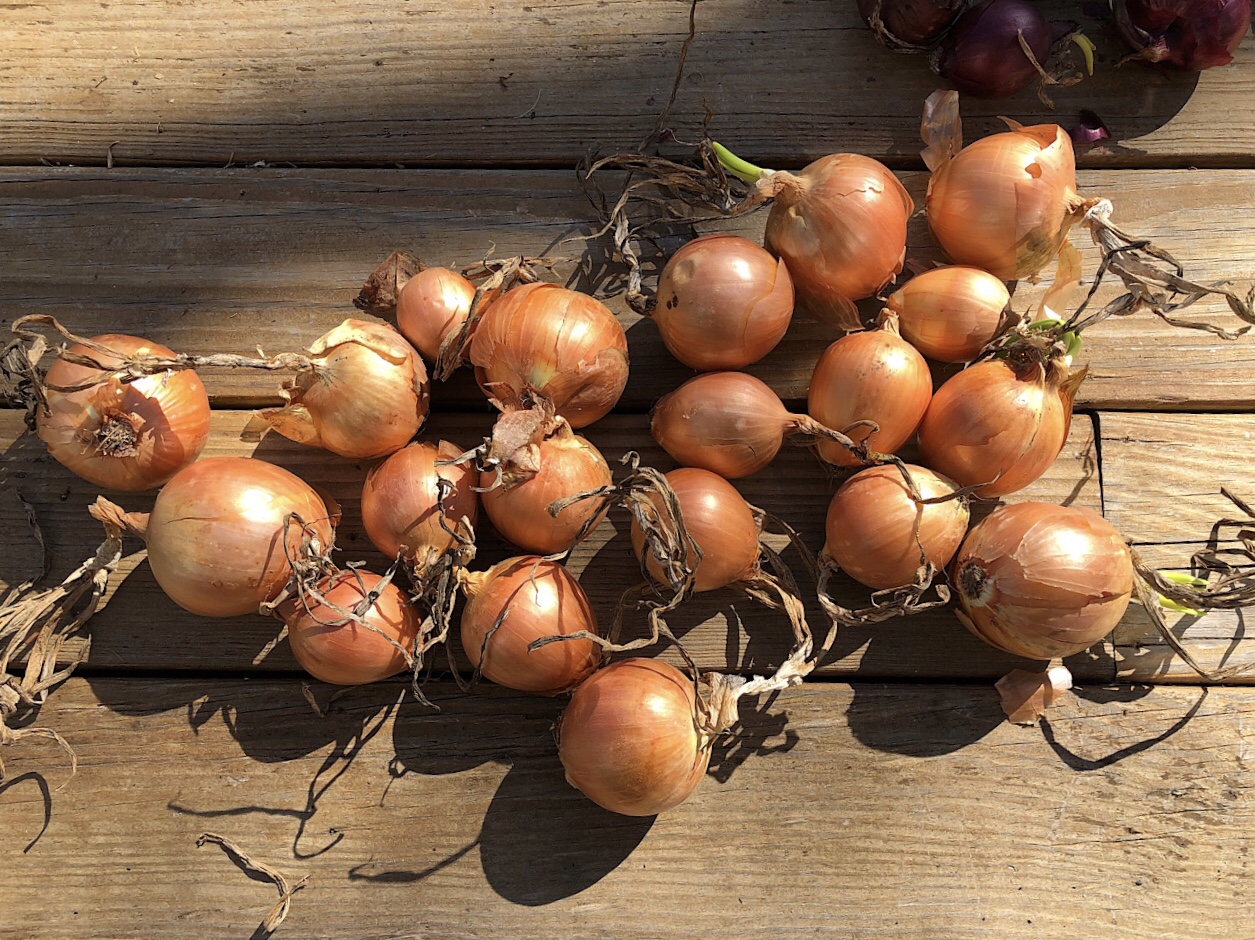
Onion, yellow.
Still have about 7 pounds! These were in Jeff’s basement, then moved into our utility room in an attempt to keep them cooler. Some sprouting.
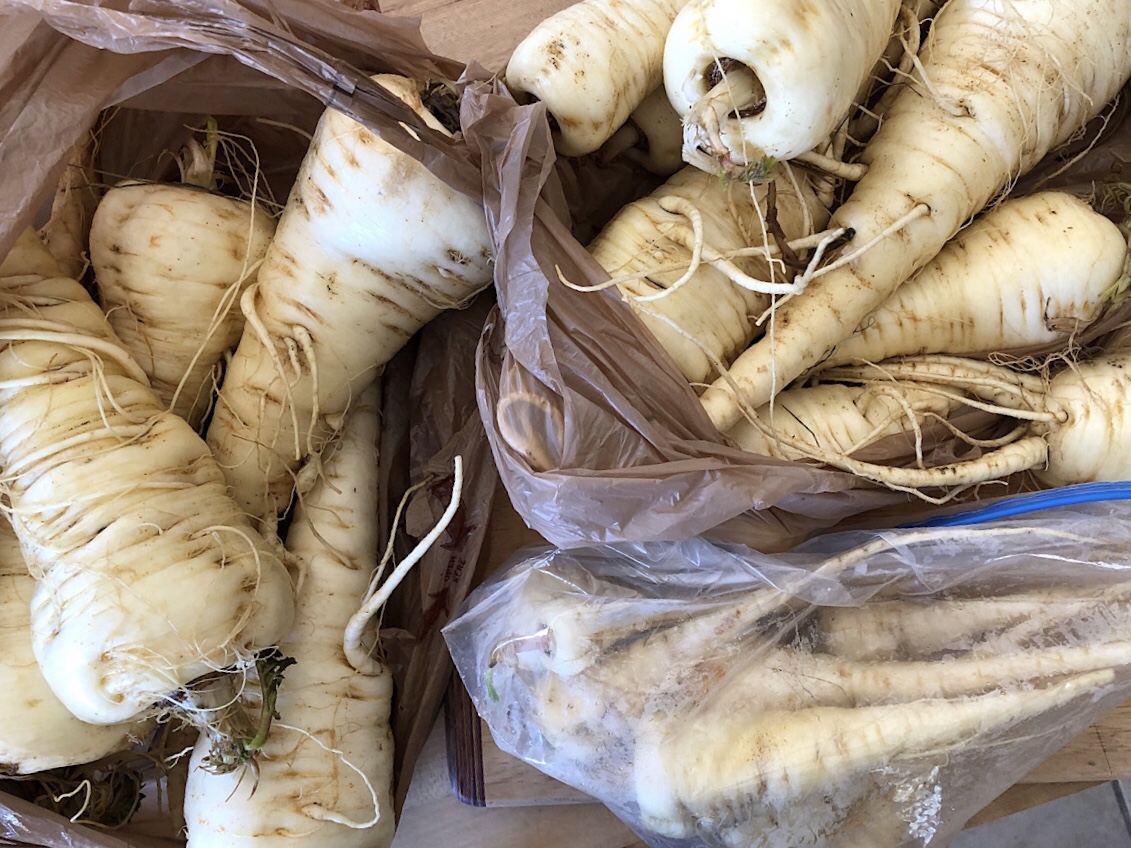
Parsnips.
Sam dug these out of the garden today now that the soil is unfrozen enough. About 15 pounds! Trimmed and froze some with damaged tops.
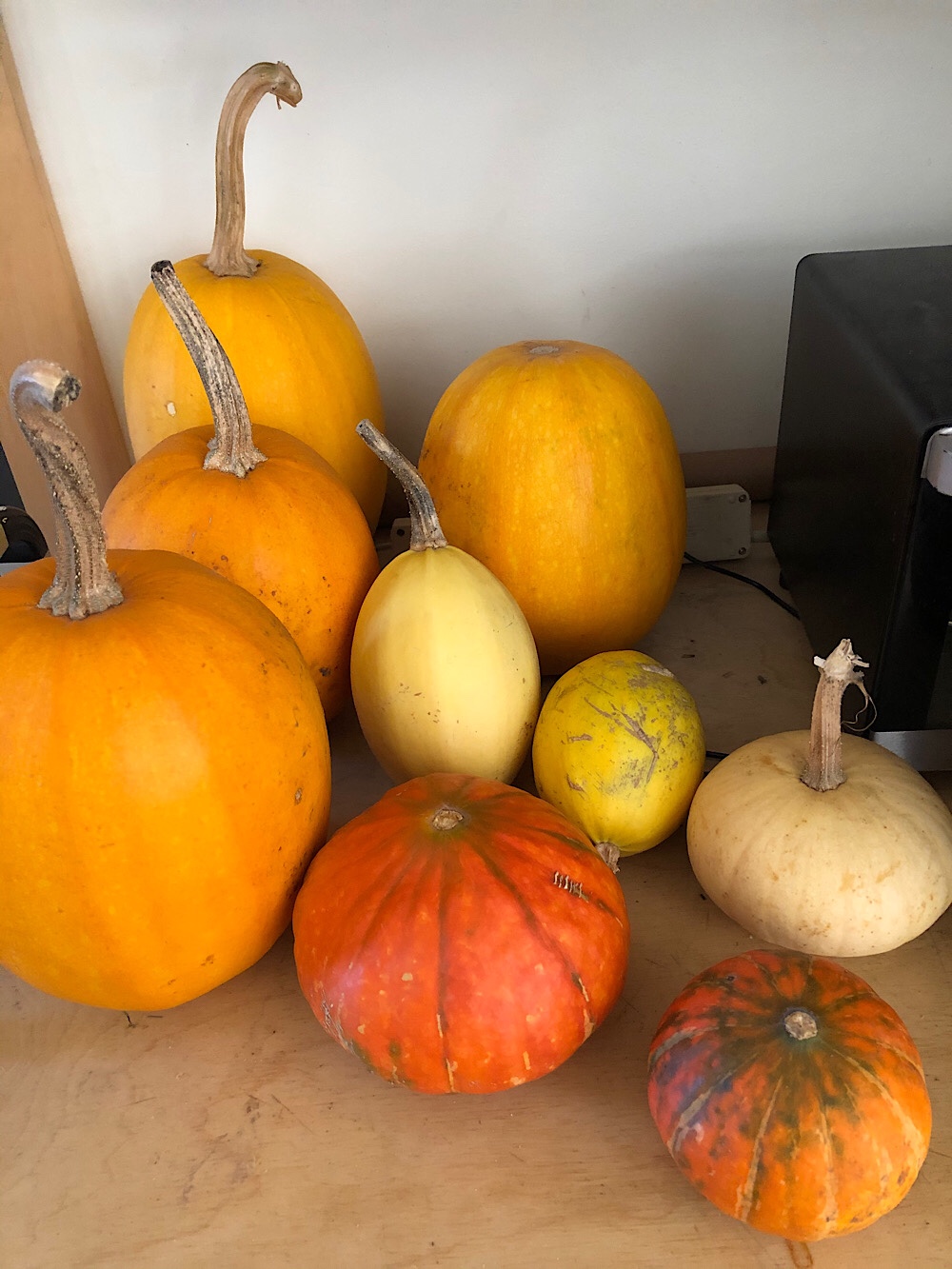
Pumpkins and squash.
These were in Jeff’s basement. We lost a lot to rot, but we had a lot to begin with. I’ve been striving to process these for the freezer or to eat them, but I can only do so much with that much squash!
Also have about a half pound of non- photogenic leeks in the fridge.
Not to mention quantities of frozen stuff, mostly squash and green beans. We finished the apples today and coming rapidly to the end of the blueberries.
Complaints:
Today felt like the last grocery shopping we might do for some time. We went to the Blue Hill Co-op and stocked up on bulk items. The only shortages that affected us were black beans, red lentils and fresh ginger. Our pantry stock is finally naturally winnowing itself down to the things we actually cook with. And we determined that the large jars hold about 6 pounds, which should be helpful next time we need to replenish. Assuming there is a next time! (Feeling very apocalyptic due to the Coronavirus outbreak.)
